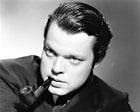
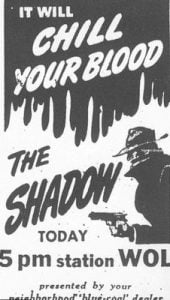 Who knows what evil lurks in the hearts of men?
Who knows what evil lurks in the hearts of men?
The Shadow knows!
The Shadow (1937-1954) aired “Professor X” on September 18, 1938 as its 52nd episode of approximately 690. Though only about 275 are known to still exist, the number is subject to change as new episodes are unearthed from time to time. This is the first episode we have featured since November of 2019 (as our 500th posting) and only the second since April of 2019, and I felt it was time for another, for The Shadow has proven quite popular with Golden Age radio fans, and especially fans of the Shadow in both radio and magazine formats.
The following is an abridged account of the character’s radio and magazine history for those coming to The Shadow for the first time. Long-time listeners may have forgotten some of the details, so if you are among them, refresh your memories or take a moment to grab your favorite beverage of choice before listening to this episode.
The history of the Shadow character is long and storied. A bare bones synopsis begins on July 3, 1930 when the narrator of magazine publisher Street & Smith’s radio version of its pulp magazine, Detective Story Magazine, was given the name of The Shadow. This mysterious voice who merely introduced and narrated the radio show, but was not a character in any of the episodes, became so popular after it was taken over by Frank Readick, Jr. and his spooky, phantom laugh that on April 1, 1931 The Shadow magazine was born. It ran for 325 issues, 282 of them written by Walter B. Gibson (1897-1985) under the house name of Maxwell Grant.
 The Shadow debuted on radio on September 26, 1937 and delighted fans for more than seventeen years, closing shop on December 26, 1954. The radio show began its long run on the Mutual Broadcasting Network on Sunday evenings and was sponsored by Blue Coal. From its inception until just past its first year (Sept., 1937-Sept., 1938) the voice of the young 22-year-old Orson Welles (1915-1985, photo top right) would be heard as that of the Shadow, and Agnes Moorehead (1900-1974, photo at left) would play the role of “the lovely Margot Lane,” his “faithful companion” and aide. Following Welles’s departure (“Professor X” was his final episode) Bill Johnstone became the Shadow for the September 25th, 1938 episode, at the beginning of Season Two. Johnstone (1908-1996) was then succeeded by Bret Morrison (1912-1978), who, in two stints (1943-44 & 1945-54), was radio’s the Shadow for ten of its seventeen years (though others besides these three mainstays would ascend to the role). Moorehead would also exit the show (in 1940) to follow Welles after he formed his Mercury Theater on the Air, as well as appear in several of the young genius’s classic films.
The Shadow debuted on radio on September 26, 1937 and delighted fans for more than seventeen years, closing shop on December 26, 1954. The radio show began its long run on the Mutual Broadcasting Network on Sunday evenings and was sponsored by Blue Coal. From its inception until just past its first year (Sept., 1937-Sept., 1938) the voice of the young 22-year-old Orson Welles (1915-1985, photo top right) would be heard as that of the Shadow, and Agnes Moorehead (1900-1974, photo at left) would play the role of “the lovely Margot Lane,” his “faithful companion” and aide. Following Welles’s departure (“Professor X” was his final episode) Bill Johnstone became the Shadow for the September 25th, 1938 episode, at the beginning of Season Two. Johnstone (1908-1996) was then succeeded by Bret Morrison (1912-1978), who, in two stints (1943-44 & 1945-54), was radio’s the Shadow for ten of its seventeen years (though others besides these three mainstays would ascend to the role). Moorehead would also exit the show (in 1940) to follow Welles after he formed his Mercury Theater on the Air, as well as appear in several of the young genius’s classic films.
To arrest possible confusion arising from seeming inconsistencies between the print and radio versions of The Shadow it is important to note the following differences (though there are others):
The original print version of the Shadow portrayed him without any powers at all; he was a shadowy figure of the darkness, a cunning sleuth dedicated to overthrowing evil wherever he found it. It wasn’t until the radio version came along that he was imbued “with the power to cloud men’s minds” from a secret he learned in the Orient.
In The Shadow novels, Miss Lane’s first name was spelled Margo; for radio it was Margot.
In The Shadow novels, Margo Lane was not aware of the Shadow’s secret identity; for the radio scripts she was the only one who did know his secret identity.
In the magazine, the Shadow’s primary alter-ego was (eventually) revealed as that of Kent Allard; his radio alter-ego was Lamont Cranston.
As for “Professor X,” as already mentioned, it was to be the final episode with Welles as the Shadow. It has more of a solid SF grounding than the vast majority of the episodes, though it does involve a former prohibition bootlegger of less than sterling moral character and a murder. I think the best way to tease this episode while not giving away every little detail is to paraphrase a few words known to all, far and wide: “Beam me up, Shadow!” So listen now to this tale of futuristic science as the Shadow must deal with the invention of one “Professor X!”
The weed of crime bears bitter fruit. Crime does not pay. –The Shadow
Play Time: 29:26
{Sad that a new school year had just begun, the neighborhood gang looked even more forward to their Saturday gatherings at the corner newsstand, where more pleasant reading material awaited them. Astounding SF (1930-present, now Analog) was still in its first year with John W. Campbell as new editor, Campbell replacing former editor F. Orlin Tremaine in October of 1937. Tremaine’s editorial tenure ran from October of 1933 to October of 1937. Campbell then helmed the magazine until his death in July of 1971, though his name remained on the masthead until December of that year. Ben Bova became the magazine’s official editor with the January 1972 issue. Astounding SF was a monthly in 1938. Three days before “Professor X” aired, the new issue of The Shadow magazine (1931-49) hit the stands. At this time The Shadow ran 2 issues per month–one every two weeks!–and the issue below was cover dated September 15, 1938 (a Thursday). So the gang was primed and ready when the new Shadow episode came over their radios and into their living rooms on Sunday night, a mere three days later. The magazine would retain its bi-weekly schedule into the middle of 1943, but due to the paper shortage during the war would cut back to a monthly schedule. The venerable Weird Tales (1923-54) was in fine form in 1938, featuring such future classic authors as Seabury Quinn, Algernon Blackwood, and Robert E. Howard just in the one issue spotlighted below. For curious Robert E. Howard fans, his short story “A Thunder of Trumpets” appeared in this issue. A monthly in 1938, WT would go to a bi-monthly schedule in 1939.]
[Left: Astounding, Sept. 1938 – Center: The Shadow, Sept. 15, 1938 – Right: Weird Tales, Sept. 1938]
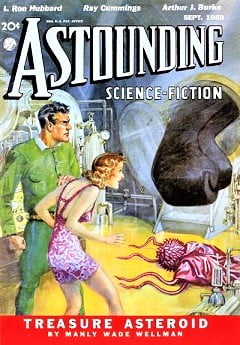
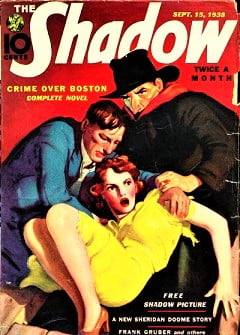
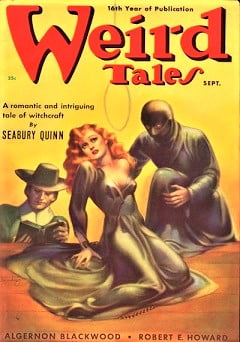
To view the entire list of weekly Old Time Radio episodes at Tangent Online, click here.